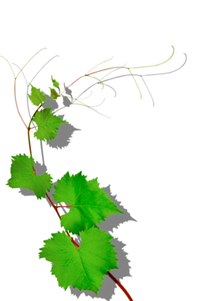
Trends In Whisky...
Kane MuggeridgeSep 02, 2022
Whisky is an industry steeped in tradition but at the moment, change is in the air.
With new distilleries appearing all around the world and an apparent insatiable thirst for the stuff, the market has become increasingly crowded and cluttered, which is pushing a need to differentiate and diversify.
Of course, the modern drinks consumer is now well versed in variety, thanks mainly to sectors such as craft beer, where the rules are more relaxed and there is seemingly no bounds to the possibility of experimentation. This has forced whisky’s hand, to a certain extent, and we have seen a loosening up and blossoming of innovation, but also the adoption of some easy techniques to create new malts and quick. Here’s a look at some of the trends that have been emerging over the last wee while
Barley
It seems odd that investigation into barley as a driving force of flavour in whisky has historically had such short shrift as, currently, grain experimenting is all the rage. From single farm and local barleys to high roasted and darker malts there are plenty of distilleries experimenting with the key ingredient of their wort. Bruichladdich, Kilchmoanm, Eden Mill and Waterford are a few that spring to mind, plus Ardbeg of course, whose latest special release is made with black roasted barley.
Casks
With decent sherry casks seemingly becoming harder to source, the current trend for seasoned oak would have many calling out a general deterioration in cask quality - but it has also triggered the increase in use of new woods and casks of different provenance. Chinquapin casks have appeared in recent GlenAllachie expressions and the inaugural Raasay releases and, of course, the Scotch whisky association recently relaxed its rules allowing the likes of beer, tequila, calvados, barrel-aged cachaça, shochu and baijiux casks into the mix. The rise of world whisky has also seen an explosion of wine and alternative dessert wine casks too.
Youthful malt
Young whisky is no longer seen as inferior. Many new distilleries are releasing malt on the run up to what might be deemed as a standard 10 or 12 year old release and some of them have proved rather good. Ardnamurchan pushed this one step further with a pre-whisky release labelled as malt spirit. The AD 2016, 17 and 18 were remarkably drinkable. Pushing this theme one step further, the distillery has been releasing its inaugural core single malt in batches and the consumer has been able to watch it evolve and grow as it approaches a standard the distillery is happy with.
“Work in progress” releases, as some have called them, are now very much the standard and there is obviously a market for them thanks to the collectors and the curious who are out there. In 2021 Ardbeg also added a 5 year old to the core releases; yet more proof that there is certainly a market for younger malts. Young releases are a quick and effective way of providing diversity - it’s much easier to roll out tests with young malt than it obviously is to do so with something aged for 12 years.
The rise of the finish
From talking with consumers over the years, I really doubt that there are many who go out of their way to track down finished whiskies but, regardless, finishing whisky seems to have become a very popular thing amongst producers. It is, of course, a sure fire way of getting extra flavour into a whisky and its uptake may also point to an industry that currently has less time to invest in maturation and a need to generate whisky quickly. Again, it offers an easy way to provide variety too. We are even seeing this fad on the independent bottling scene too - notably with the SMWS and Signatory. Finishing has been around for ages and there are plenty of good examples - but as a process it does little for the transparency of what's in the glass in my opinion.
As I write this piece The Glenlivet “reimagined” its 21 and 25 year olds. How did it do this? You guessed it! The new 21 year old is now finished in three different types of casks: first-fill Oloroso sherry, French Troncais oak cognac and vintage Colheita port and the 25 year old is finished in Pedro Ximinez sherry and Troncais oak cognac casks. I won’t comment on quality as I haven’t tasted them but they manage to sound slightly muddled - which isn't a great starting point!
Sustainability
With the recent explosion of new distilleries a new wave of sustainable whisky making has arrived. Distilleries such as GlenWyvis, Ardnamurchan and Ncn’ean use renewable energy sources and biomass boilers for heat and reprocess much of the waste created during the distillation. This is without doubt the way forward and something the consumer will look for more and more. Maybe it’s time that sustainable practices made their way onto the labelling?
Price
Well, there’s not much I can say about the cost of whisky that isn’t in the public realm. With 40 year high inflation thanks to an overcooked economy on the heels of a global pandemic, exacerbated by supply issues, a rampant secondary market and incessant demand - there is only one way for prices. That said - we’ve witnessed a cooling housing market, falling equities and are seeing commodities start to recede - is Scotch next?
Click here to see our current list of whiskies.


